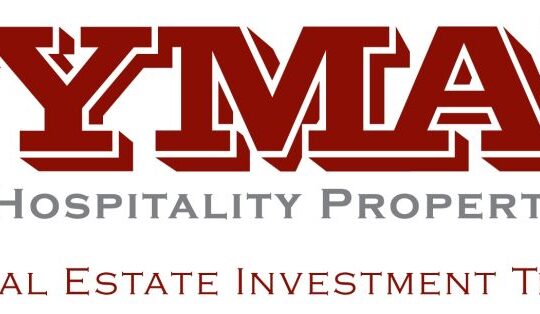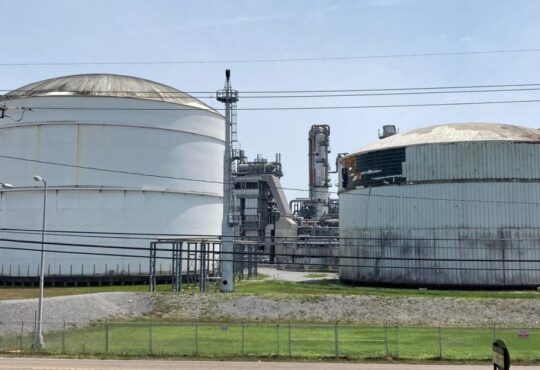Rising Costs, Shifting Market Have Office Landlords Tightening The Purse Strings On TI

After a decade of increases turbocharged by the pandemic, office tenant improvement allowances are flattening as costs rise and landlords grow weary of forking over cash to entice occupiers.
TI allowances for office leases have surged by 112% since 2016, peaking at $212 per SF in gateway markets earlier this year as landlords jockeyed for leases. But a recent leveling of such spending, growing by just 8% last year, underscores the difficulties facing office owners.
“Rents are going up,” CompStak Senior Director of Real Estate Intelligence Alison Baumann said. “But landlords are also spending a lot to get those tenants.”

Bisnow/created with assistance from Microsoft Copilot
The surge in tenant improvement allowances for U.S. office space has plateaued.
A new report compiled by CompStak and Savills offers a window into changing office lease terms — and the challenges facing landlords with a surfeit of commodity office space. Rising capital costs, as well as labor and materials prices, have made landlords more cautious as the budgets on potential projects balloon.
Even as leasing activity across major markets hit a post-2019 high in Q3, bringing national office vacancy down for the first time since the pandemic, the recovery remains unevenly distributed, and challenges abound.
As construction costs and tariff uncertainty rise, especially with levies on imported lumber, steel, aluminum, glass and interior furnishings, certain segments of the market may be scraping the ceiling of concessions, Savills New York City Research Director Matthew Schreck said.
Owners of top-flight assets can begin to dial back TI spending because they are more confident in their ability to secure tenants. The shrinking pipeline of new space — just 12.2M SF is expected to open nationally in 2026, one-third of what was built in 2024 — also boosts their optimism.
While trophy base rent went up 13% nationally last quarter, juiced by rising demand for the most impressive spaces, effective rent for this trophy property rose nearly in tandem, increasing 8.5%, suggesting that sweeteners and concessions were minimal, according to Avison Young data.
But owners of Class-B and even some Class-A buildings face trickier debt situations and competition pushing them to reinvest in their buildings, forcing their hand as tenant improvements have become more and more expensive.
Rising costs mean owners of Class-B or C space hit the ceiling of what they can offer in terms of TI, and now they may need to focus on longer free periods or cheaper base rent.
Those measures would restrict operating income, possibly creating risk for some landlords going forward, Newmark Head of National Occupier Research Jessica Morin said.
Schreck said the strategy for many is to spend money to eventually make money. Landlords can spend generously on TI and offer free rent to lock in tenants for long terms.
Then when the loan comes due, a full roster can help convince a lender to offer more generous terms, even a cash infusion, that turns an underwhelming effective rent for the building owner into a more stable, even profitable, long-term arrangement.

The CompStak-Savills report found an increasing correlation between landlord TI spending and lease length, with more spending leading to longer leases, guaranteeing income over longer periods.
This dynamic also explains why, in many markets, asking rents have increased in recent years as the vacancy rate remains elevated. The real inflation-adjusted rents are roughly 19% below where they were prepandemic, Morin said.
CompStak data found the spread between advertised and effective rent was 15.8% for Class-A property this year and 25.6% for Class-B.
The recovery remains divided based on the metro area and the class of a specific office building. In San Francisco — where, despite the boom of artificial intelligence funding and leasing, there is still significant empty space — TI spending remains elevated as landlords try to stay competitive.
But in New York, with vacancy in Midtown falling based on surging demand for Manhattan trophy space, what was once a market where tenants could call the shots has become less generous with TI allowances and bespoke renovations. Schreck said he sees a future of more spec suites, more reuse and longer-term leases for Class-A offices.
Newmark data found that concessions for Midtown trophy properties have sunk this year compared to last. TI allowances dropped from $162 per SF to $133 per SF, with free rent periods down to 12.5 months from 14.5.
Landlord TI packages don’t cover everything needed to upgrade today’s trophy space, Newmark’s Morin said. If the New York citywide average is about $120 per SF, the build-out costs can range from $150 per SF to even $300 per SF.
One new layer to this TI negotiation between tenants and landlords is the bonus depreciation change found in the One Big Beautiful Bill Act signed in July, which allows owners to immediately deduct the full cost of new property or renovations the year the changes enter service.
This can be a huge tool for tenants and landlords, and it can help alleviate some of the out-of-pocket pain coming from increasing construction costs, Morin said.
One Newmark case study found that for every $100M spent on tenant improvements, the regulatory change could mean an additional $4M to $7M in savings.
There is also a significant pool of occupiers, especially from the nonprofit and government sectors, seeking savings, not experience-driven workspaces. They will be shopping in a market where commodity landlords will be competing on cost alone.
But that lack of bigger capital expenditures to bring the office up to date means some of these spaces may effectively skip a generation of upgrades, making them that much more costly to upgrade next time around.
“If you’re not upgrading with finishes for today’s tenants, you’re just going to continue to bank on the fact that some occupiers just want the physical space,” Morin said.





